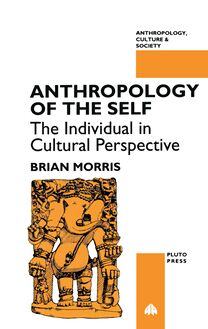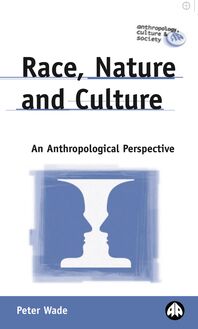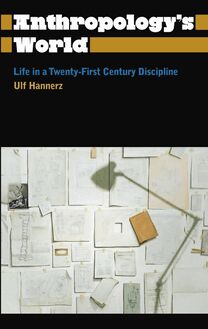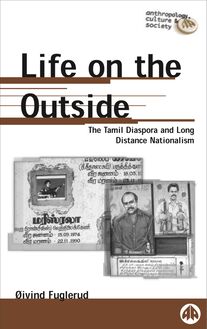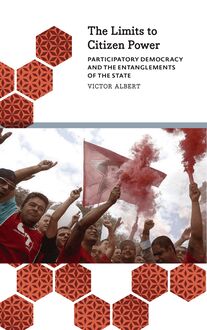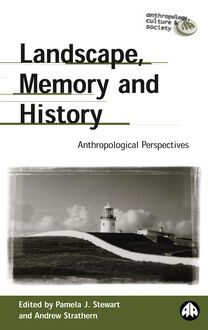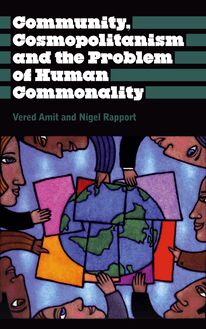-
 Univers
Univers
-
 Ebooks
Ebooks
-
 Livres audio
Livres audio
-
 Presse
Presse
-
 Podcasts
Podcasts
-
 BD
BD
-
 Documents
Documents
-
- Cours
- Révisions
- Ressources pédagogiques
- Sciences de l’éducation
- Manuels scolaires
- Langues
- Travaux de classe
- Annales de BEP
- Etudes supérieures
- Maternelle et primaire
- Fiches de lecture
- Orientation scolaire
- Méthodologie
- Corrigés de devoir
- Annales d’examens et concours
- Annales du bac
- Annales du brevet
- Rapports de stage
La lecture à portée de main
307 pages
English
Découvre YouScribe en t'inscrivant gratuitement
Je m'inscrisDécouvre YouScribe en t'inscrivant gratuitement
Je m'inscris
Obtenez un accès à la bibliothèque pour le consulter en ligne
En savoir plus
En savoir plus
307 pages
English
Obtenez un accès à la bibliothèque pour le consulter en ligne
En savoir plus
En savoir plus

Description
Youth and the State in Hungary takes as its focus the nature of Hungary’s youth movements over the last seventy years. In a detailed ethnographic study, Laszlo Kurti examines the lives of youth workers in the Csepel district of Budapest in the context of the wider political and economic transformations witnessed during the twentieth century.
Kurti follows State-Youth relations from the inter-war capitalism that made peasants into workers, through the post war state socialism – ‘Stalinism’ and after – to the reintroduction of capitalism in 1990. This time frame allows an exploration of the transformations and dilemmas of youth, class, gender and ethnicity as they develop across time.
In the course of this study two main themes emerge: the reproduction of class in youth culture across shifting socio-economic conditions; and the mobilisation of youth movements in resistance to the state. Youth and the State in Hungary challenges the orthodox equation of youth and resistance by arguing that youth mobilisation has, in fact, served the interests of the state. Nevertheless there remains a genuine space for resistance and contestation in the reproduction of youth culture.
Preface
1. Introduction: Theoretical Perspectives
2. Historical Ethnography, Ethnographic History: Peasants into Workers
3. Development of Red Csepel: Youth During Monarchy and Fascism
4. Vanguard Youth: From Stalinism to State Socialism
5. Existing State Socialism: Socialisation and Youth
6. The Communist Youth League: Ideology, Culture and Alienation
7. Youth Against the State: Friends, Partners and Family
8. Hungary’s Manhattan: The Velvet 'Revolution' and the Re-making of Capitalist Youth
Glossary
References
Index
Kurti follows State-Youth relations from the inter-war capitalism that made peasants into workers, through the post war state socialism – ‘Stalinism’ and after – to the reintroduction of capitalism in 1990. This time frame allows an exploration of the transformations and dilemmas of youth, class, gender and ethnicity as they develop across time.
In the course of this study two main themes emerge: the reproduction of class in youth culture across shifting socio-economic conditions; and the mobilisation of youth movements in resistance to the state. Youth and the State in Hungary challenges the orthodox equation of youth and resistance by arguing that youth mobilisation has, in fact, served the interests of the state. Nevertheless there remains a genuine space for resistance and contestation in the reproduction of youth culture.
Preface
1. Introduction: Theoretical Perspectives
2. Historical Ethnography, Ethnographic History: Peasants into Workers
3. Development of Red Csepel: Youth During Monarchy and Fascism
4. Vanguard Youth: From Stalinism to State Socialism
5. Existing State Socialism: Socialisation and Youth
6. The Communist Youth League: Ideology, Culture and Alienation
7. Youth Against the State: Friends, Partners and Family
8. Hungary’s Manhattan: The Velvet 'Revolution' and the Re-making of Capitalist Youth
Glossary
References
Index
Sujets
Informations
| Publié par | Pluto Press |
| Date de parution | 20 juillet 2002 |
| Nombre de lectures | 0 |
| EAN13 | 9781849641227 |
| Langue | English |
| Poids de l'ouvrage | 1 Mo |
Informations légales : prix de location à la page 0,6250€. Cette information est donnée uniquement à titre indicatif conformément à la législation en vigueur.
Extrait
YOUTH AND THE STATE IN HUNGARY
Capitalism, Communism and Class
LÁSZLÓKÜRTI
P Pluto Press LONDON • STERLING, VIRGINIA
First published 2002 by PLUTO PRESS 345 Archway Road, London N6 5AA and 22883 Quicksilver Drive, Sterling, VA 20166–2012, USA
www.plutobooks.com
Copyright © László Kürti 2002
The right of László Kürti to be identified as the author of this work has been asserted by him in accordance with the Copyright, Designs and Patents Act 1988.
British Library Cataloguing in Publication Data A catalogue record for this book is available from the British Library
ISBN 0 7453 1791 X hardback ISBN 0 7453 1790 1 paperback
Library of Congress Cataloging in Publication Data applied for
10
9
8
7
6
5
4
3
2
1
Designed and produced for Pluto Press by Chase Publishing Services, Fortescue, Sidmouth EX10 9QG Typeset from disk by Stanford DTP Services, Towcester Printed in the European Union by Antony Rowe, Chippenham, England
CONTENTS
List of Figures Preface
1. Introduction: Youth, Class and the State 2. Historical Ethnography/Ethnographic History: Peasants into Workers 3. The Development of Red Csepel: Youth during the Monarchy and under Fascism 4. Vanguard Youth: From Stalinism to State Socialism 5. Existing State Socialism: Socialization and Youth 6. The Communist Youth League: Ideology, Culture and Alienation 7. Youth against the State: Friends, Partners and Family 8. Hungary’s Manhattan: The Velvet ‘Revolution’ and the Remaking of Capitalist Youth Epilogue: Class, Youth and the State
Glossary References Index
v
vi vii
32
1
55 82 113 140 180
215 240
254 273 293
LIST OF FIGURES
1. Children on Csepel Island, 1911 (Hungarian Ethnographic Museum. Budapest). 2. Stalinist reorganization. Entrance to the Csepel Works, 1948. The sign reads: ‘Freedom, Friendship – Here only organized workers work’ (author’s collection). 3. Political meeting of cultural activists at the Csepel sports complex, 1948 (author’s collection). 4. May Day demonstration, 1949. The slogan reads ‘Unity in Reconstruction. Vote for the Independent Hungarian People’s Front’ (author’s collection). 5. Leonid Brezhnev and János Kádár meet in Csepel, 1979 (author’s collection). 6. Meeting of the local Communist Party and Youth League activists, mid-1980s. The sign reads: ‘The Communist Party can build on the dynamism, eagerness and determined activities of youth’ (author’s photograph). 7. Paramilitary sports event organized by the Communist Youth League, mid-1980s (author’s photograph). 8. Female football championship, organized by the Communist Youth League. mid-1980s (author’s collection). 9. ‘Greetings from Csepel’. Early 1980s postcard showing the connectedness of work and leisure: the entrances to the Communist Party headquarters and the Csepel Works, a heroes statue, a newly opened coffee shop and a cultural centre (author’s collection). 10. The last socialist state ritual in front of the Lenin statue in Csepel celebrating the Great October Socialist Revolution, 7 November 1988. The workers’ militia provided the guard of honour (author’s collection). 11. The last moments of the Lenin statue at the entrance to the Csepel Works, 14 March 1990 (author’s collection). 12. The newly designed coat of arms of the Csepel local government showing its connectedness to the past; the Danube, agriculture and steel (author’s collection).
vi
44
83
85
90
106
143
177
178
197
217
229
232
PREFACE
The narrative presented here is based on my fieldwork in Csepel, the twenty-first district of Budapest, where I conducted anthropological research in the mid- to late 1980s and during the 1990s. The reason why I chose this area lies in my desire to probe the secrets of ‘Red Csepel’, a legendary place I had come to know through a revolutionary socialist song we had to sing on trips and in music classes as Hungarian school pupils in the 1960s. I was brought up in the country and, although I made the trip to the capital, Budapest, a few times in the course of 15 years, I never managed to visit Csepel. Whispered rumours about the ‘workers’ paradise’ there only intensified its status asterra incognita. When I finally reached the island in 1985 as a trainee-anthropologist brimming with enthusiasm, the town itself appeared to be anything but ‘red’. Rather, it was dusty, noisy and lively; there, as in any other ordinary industrial city, people rushed to work, mothers took their children to kinder-garten, and children wore Pioneers’ scarves as they jostled together on their way to school. In vain did I seek signs of its revolutionary past, coming no closer to that metaphorical colour than the pioneers’ neckwear. By the time I left after months of intensive field research, I had come to realize that the colour ‘red’, like so many youthful illusions, is indeed deceptive; and its nuances are often hidden beneath surface appearances. Spending time in Csepel was also a form of time-travel, an ethnoscape of back-to-the-future. Frequently, I found myself recalling my own youth when, after graduation from high school, I worked for the state-run railway in the regional centre of Szolnok (which we nicknamed ‘Little Moscow’ in deference to its several Russian army bases and the desolate ‘modern’ apartment blocks reminiscent of Stalinist architecture). As I listened to Csepelers’ complaints of a rigid industrial hierarchy, excruciatingly slow career development and a hectic work rate, I could not help recalling how, as an 18-year-old semi-skilled mechanic, I, too, had felt about the same issues. As we serviced railway carriages dripping with oil, we were aware that our work was filthy; when we picked up our monthly cheques, we knew we were grossly underpaid; and when we requested concessions, we were dismissed out of hand. What could be done? To whom could we turn? There was a union, of course, but we were not included in its ranks. There were social organiza-tions – the Hungarian Socialist Workers Party and the Communist Youth League (thereafter HSWP and KISZ respectively), organizations of which we
vii
viiiYouth and the State in Hungary knew little and whose power we only vaguely sensed, whose leaders descended unannounced on the workshops like demi-gods. In the course of such reminiscences, though, I was brought squarely back to my fieldwork reality by explanations of how differently shop floors were organized, and how decisions were made in Csepel. These were frustrations ‘in the field’ occasioned by the transference of frustrations from ‘out of the field’, in a different time and place. No research, it goes without saying, can take place without frustrations, trial-and-error procedures and serious mistakes. Returning to Hungary after more than ten years’ absence and with an American education, I was well aware that time had not stood still for my youthful friends. Fashions were different, popular dance music had changed, new slang words, unknown to me, had been coined and material conditions had improved substantially. Although I found it difficult to appreciate the speed of their evolution, these changes did not fail to impress me. As I pondered a potential fieldwork site, I observed that no one could tell me what I wanted to hear: that is to say, that an ideal factory town bursting with the appropriate organizations, heritage, locality and working-class life-styles awaited my research project. Still more frustrating were the complaints of Hungarian sociologists and political scientists about the current economic situation in Hungary, the impossibility of conducting surveys and the presumably worthless effort of carrying out fieldwork and participant observation among workers. The more I tried to comprehend this, the more I clung to my ‘otherness’, my ‘difference’ from them; after all, I was an American, and an anthropologist. The world of work as seen from the point of view of steel mills and urban ghettos has enjoyed scant attention in the anthropological literature on Eastern Europe, preoccupied as it has been with small-scale peasant societies and the ways in which they evolved as the result of socialist transformations in agriculture. When I discussed my plan to conduct fieldwork and participant observation in an industrial urban milieu, with specific reference to workers at the Csepel Works, a few Hungarian sociologists were non-committal, some supported my idea, while others found ways to discourage me. They argued, for example, that the site was too large, ill-suited for an in-depth study, no longer a functioning community, and the subject matter out of favour. Despite this discouragement, I stuck to my original idea and was able to secure permission to enter the Csepel Works, which I was told was of military significance. Little did I know then that any group or social cluster has the potential to constitute a ‘proper’ subject. Csepel has, of course, attracted writers and travellers. To evoke its impact, I quote here two sources, both western, that bear testimony to Csepel’s enduring power, at once both real and symbolic. The German writer Hans Magnus Enzensberger describes it as follows inEurope, Europe:
Prefaceix Today the ironworks of Csepel is one of the dinosaurs of the socialist planned economy. Red Csepel is also a symbolic place for the economic reformers. For them this state-owned concern is not the engine of the economy but a brake block, an unprofitable, immovable relic of Stalinism. The machinery still dates, in part, from the forties; the fittings and infrastructure are obsolete. In truth, Hungary’s crisis can be read quite literally from the dust in the passageways, from the resignation in the faces, from the rust in the factory halls. (1989: 104–5) While the Italian I. Zanetti sees it thus:
According to a 1990 map, the short little ‘Grass-street’ in Csepel ends at a square where the statue of V.I. Lenin stands. However, one looks in vain for Vladimir Ilich Lenin: instead we find a few, beaten up containers, dog droppings, and patches of grass here and there. The bronze statue of the leader of the revolution was removed in March 1990. Where? No one knows. One thing is sure: it is gone now. To rework the past is not what people think of these days. The market economy is at the doorstep of the country requiring the full energy of all; clearly new times are coming to Csepel. (1992: 14)
Seeing the Csepel Works for the first time in the mid-1980s, I too was struck by its vast size, ear-splitting din and energy, and the contradictory images it projected. People moved in and out of the factory; and at the gates, through which only those with identity badges could pass, banners, signs and packed stores signalled a strong life force. Outside the main gate single-family workers’ houses, with their small allotments, reminded the visitor of the aftermath of the First World War; the main square, with its central location for a Catholic church, police station, city hall, HSWP, KISZ, trade union, shops and bus stations, conveyed a sense of importance and centralized power. Further off, huge, ten-storey apartment blocks dominated the sky-line, results of the ‘glorious victory’ of Stalinism and state socialism over bourgeois capitalistic individualism, terms freely quoted even during the mid-1980s. Life in Csepel, it soon became clear, had a rhythm of its own. Although it was part of the nation’s capital, it nevertheless seemed separated from Budapest, just as Csepel youth were different from their inner-city counter-parts. When I was a regular visitor to Csepel I realized that the 20 minutes it took to get there by train meant far more than distance in miles. As it happens, Csepel is cut off by the Small Danube and a good three-mile road from Soroksár and Pesterzsébet, two of Budapest’s outlying working-class districts. No other districts have such boundaries, and the Danube bridges contribute to this sense of isolation. Finally, the Csepel Works, with its former ‘red’ heritage, are still productive, even though, as one young informant confided to me, Csepel has become more pink now than red (here the ‘pink’ symbolizes alcoholism, as in the term˝urzóaszsní, referring to the ‘pink world’ one supposedly sees when drunk). The district now wants to become Hungary’s Manhattan; its current leadership is bent on creating a new capitalist town with all the benefits and not the negative side-effects of global capitalism. Are
xYouth and the State in Hungary they too idealistic? Perhaps. Yet, this book conveys a good dose of realism mixed with idealism without which no community can survive. Perhaps this last point too was one of the reasons why I instantly liked, and still like, working-class communities. Like other academics, anthropol-ogists select fieldwork sites according to criteria ranging from availability of funding, and pressures from supervisors, to offers of help from those-to-be-studied and personal, intrapsychic motivations. The above impressions contributed to my selection of Csepel in the first place. After the initial trips, I read what I could about its history, working-class movements and workers’ life stories, and was fortunate to find excellent, well-documented studies on Csepel, its past and later developments. As a data source, these texts offered intriguing insights into the town’s struggle to maintain its identity and retain its population. I was able to obtain much of this information, especially concerning the struggle of the communist underground in the Horthy era, from the parents of my informants, some of whom found their way into this study. While collecting my data through interviews with selected workers, func-tionaries and management personnel, I placed special emphasis on obtaining company statistics, production records, HSWP, KISZ, brigade files and historical documents. Other aspects of my sources came from participant observation in the Csepel Works and the many organizations within its framework. Of the more than a dozen different factories within the Csepel Works, two were selected for closer scrutiny: the Machine-Tool Factory (an industry chosen for its historical importance at Csepel) and the Non-Ferrous Metal Works (for its impressive output and monopoly in Hungarian metallurgy). No sooner had I begun my daily visits to Csepel and its young workers than I realized that I could not conduct interviews with them alone. Rather, I had to proceed hierarchically, from the top down. In fact, my first informants were company managers, party and communist youth organ-ization secretaries, and trade union stewards who were genuinely eager to learn what ‘this American’ wanted to do in Csepel. By satisfying their curiosity, I also learned that many of my initial hypotheses concerning repro-duction, socialism and factory work were outdated, if not simply wrong. When I reached middle-level management and, finally, the workers themselves, I was quite familiar with the hierarchical set-up, organization, power distribution and the most important company statistics. From the approximately 100 individuals with whom I came into contact throughout 1986–96 I selected a manageable group for in-depth inquiry based on availability, willingness to contribute to this study and the personal chemistry required between fieldworkers and their informants. I followed these workers through their factory life; I learned of involvements in various political and cultural organizations, their relationship to other workers and the management, and discovered how – and on what – they worked. Their world of work was equally fascinating and, in a sense, complex, almost
Prefacexi chaotic. I hope, however, that in this analysis I have been able to represent their ideas and aspirations faithfully. A final note is in order concerning the location and time-frame of my study. I am well aware that the conclusions of this research are bound by both factors, for in other trades too, such as mining, textiles, and service, workers are shaped by the material forces of their lives. Youth in industries located in smaller towns or in the country, however, must be viewed differently from Csepelers, for despite their work in industry, rural youth remain closer to material values and conditions, and the life-styles charac-teristic of the countryside in general. Nevertheless, some aspects of blue-collar Hungarian youth may be generalized, not the least of which is that they are, on the whole, a poor and exploited group, yet not without con-siderable countervailing power. Whether in Budapest or the countryside, a generational spirit characterizes them; and this spirit is I hope, discernible in my analysis. The most intensive portion of the material for this study was collected in 1986 and subsequently between 1991–93 and 1996–98. The changes that took place between 1989 and 1992 were so fundamental and thoroughgo-ing that they compelled me to rewrite several chapters. The Scandinavian political scientists have, it seems, been on the mark in noting with reference to these changes that: ‘Anything is still possible in Eastern Europe’ (Berglund and Dellenbront 1991: 211). In 1993 and 1996, I had the opportunity to revisit a substantial number of informants, a fair percentage of whom had already left the Csepel Works and found employment outside heavy industry. In other cases, my earlier youthful informants had become ‘middle-aged’ with families, a house and a car, those material aspirations that had been so wistfully expressed only six years earlier. In 1999 and early 2001, I had the opportunity to speak to several of my youthful informants I had befriended in the mid- to late 1980s. We were glad to see each other again and ruefully noticed each other’s wrinkles and grey hairs. More than that, we were all stunned by the enormous changes we all had experienced in just one decade. I have organized these chapters in a fashion that may well be considered by some as traditional; after the theoretical and introductory chapter, Chapters 2–4 are chronological in the usual sense, attempting to examine the historical events that were so vital in shaping Red Csepel. In these two chapters, I discuss the transition from feudalism to capitalism, from fascism to Stalinism and the concomitant realignment of productive relations and the politics of age. Chapter 5 describes the establishment of state socialism in Hungary and in Csepel specifically, analysing the nature of the socialist firm, with particular emphasis on those institutional mechanisms that maintain and reproduce power relations. Chapter 6 traces the specific political organizational features of the KISZ, detailing its nature, activities, membership and the views that foreshadowed its eventual demise. This chapter considers the ways in which young KISZ members regarded themselves and others, their activities and the events in which they
xiiYouth and the State in Hungary participated. These concerns are also examined in Chapter 7, where I take up the after-hours lives of youth, the family, non-kin networks and leisure activities. Chapter 8 analyses the tumultuous changes that occurred between 1988 and 1992, concluding by recapitulating my main thesis, together with a discussion of the end of state socialism and its repercussions. It is my pleasure and responsibility to acknowledge here the contributions of many individuals and teachers along this long and arduous road. My intel-lectual debt extends to members of the academic community at the University of Massachusetts, at Amherst, who share the credit for whatever merit may be found in my original data from the mid- to late 1980s. I am greatly indebted to my advisers there, John W. Cole, Sara J. Lennox, and H. Martin Wobst, for exceptional interest in my work and constructive suggestions that greatly enhanced both the research and its subsequent publication. John Cole in particular introduced me to new ideas in anthro-pology, offered friendship and intellectual stimulation, and provided a much-needed sense of direction. My initial research from 1985–86 was funded by a combined IREX-Fulbright Hays Fellowship, a European Studies Training Grant from the Department of Anthropology of the University of Massachusetts, Amherst, and in, 1991, by research grants from both the National Council for Soviet and East European Studies and the American Council of Learned Societies. The Institute for International Relations sponsored my research in Hungary, aided me in attaining access to scholars and archives, provided a home in Budapest and offered more than adequate funding, as did the Hungarian Academy of Sciences and its staff at the Office for International Cooperation which sponsored my fieldwork in 1991. In the mid-1990s, the Research Support Scheme (Prague, Open Society Foundation) and The Harry Frank Guggenheim Foundation offered financial assistance. In the period 1998–2001, my research was funded by the Hungarian Higher Education Research Grant (FKFP). I am greatly indebted to these institutions. I also extend thanks and appreciation to the University of Miskolc, the Dean’s Office as well as the Department of Political Science, where I found many excellent and helpful colleagues who have cared about my research. I would like to acknowledge as well the invaluable assistance of friends and compatriots in Hungary whose enthusiastic support and hospitality made my stay a truly pleasurable adventure. In Budapest, the staff of the Institute of Culture, the Social Science Institute, the Research Group for the Communist Youth League and Institute of Party Education (both defunct since 1990), and the Research Institute of Education offered generous assistance, as did members of the Youth Statistical Research Group at the Central Statistical Office. I owe thanks especially to I. Harcsa, J. Andics, I. Samu, G. Török, M. Samu, I. Vitányi and T. Kozma, who provided useful ideas and assistance in Budapest. I am also grateful to L. Kéry, E. Tóth, L. Boross, Z. Békési, I. Dögei and K. Friedman for contributing unselfishly their
-
 Univers
Univers
-
 Ebooks
Ebooks
-
 Livres audio
Livres audio
-
 Presse
Presse
-
 Podcasts
Podcasts
-
 BD
BD
-
 Documents
Documents
-
Jeunesse
-
Littérature
-
Ressources professionnelles
-
Santé et bien-être
-
Savoirs
-
Education
-
Loisirs et hobbies
-
Art, musique et cinéma
-
Actualité et débat de société
-
Jeunesse
-
Littérature
-
Ressources professionnelles
-
Santé et bien-être
-
Savoirs
-
Education
-
Loisirs et hobbies
-
Art, musique et cinéma
-
Actualité et débat de société
-
Actualités
-
Lifestyle
-
Presse jeunesse
-
Presse professionnelle
-
Pratique
-
Presse sportive
-
Presse internationale
-
Culture & Médias
-
Action et Aventures
-
Science-fiction et Fantasy
-
Société
-
Jeunesse
-
Littérature
-
Ressources professionnelles
-
Santé et bien-être
-
Savoirs
-
Education
-
Loisirs et hobbies
-
Art, musique et cinéma
-
Actualité et débat de société
- Cours
- Révisions
- Ressources pédagogiques
- Sciences de l’éducation
- Manuels scolaires
- Langues
- Travaux de classe
- Annales de BEP
- Etudes supérieures
- Maternelle et primaire
- Fiches de lecture
- Orientation scolaire
- Méthodologie
- Corrigés de devoir
- Annales d’examens et concours
- Annales du bac
- Annales du brevet
- Rapports de stage
Signaler un problème
YouScribe
Le catalogue
Le service
© 2010-2024 YouScribe
